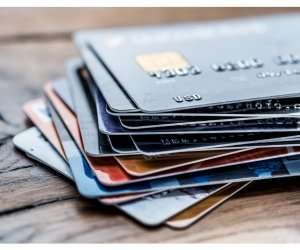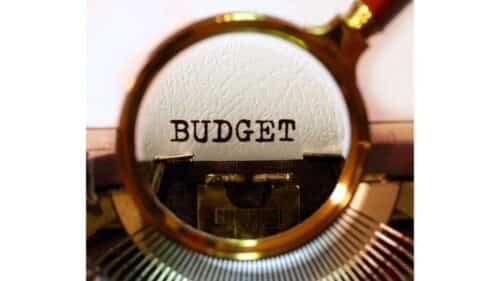Best Budget and Money Hacks To Save Your Wallet

When it’s time to tighten the belt and save some cash, the number one hurdle is…
Finding the best budget and money hacks to save your wallet
You could be convinced that you have NO clue how to do it. But this is what separates those who are constantly living paycheck-to-paycheck from those who achieve financial stability.
Saving money effectively isn’t easy, folks.
Consider John, for instance. He tried cutting back on his daily coffee runs, only to find himself splurging on expensive dinners out of frustration.
Now he’s afraid he’ll never be able to stick to a budget or see any significant savings in his bank account.
No wonder!
The Importance of Saving Money
When it comes to financial stability and independence, saving money is the unsung hero. It’s not just about hoarding pennies for a rainy day; it’s about creating a safety net that can catch you when unexpected expenses come swinging.
Imagine this: The average American family spends around $966 at the grocery store each month. That’s quite a chunk of change. Now imagine if we could shave off even 10% from that figure through smart spending habits? We’re talking real savings here.
Saving isn’t synonymous with deprivation or sacrifice—far from it. Rather, consider savings as your ticket to making informed decisions on how you’re spending without having to rely heavily on credit cards or loans.
The Role of Savings Goals
You’ve got dreams, right? Big ones, small ones—it doesn’t matter. What does matter, though, is setting clear goals with your hard-earned cash, so every dollar saved gets you one step closer to realizing those dreams.
Your goal might be something tangible, like snagging that latest tech gadget next year, or maybe something more long-term, such as buying your dream home in five years’ time. Either way, reaching these milestones gives us all an adrenaline rush, which motivates us further into our journey toward consistent saving.
No better feeling than achieving what we set out for ourselves.
Navigating Unexpected Expenses with Ease
We’ve all been there: unexpected car repairs pop up out of nowhere, medical emergencies hit like lightning bolts during blue skies… These are unavoidable hiccups that life throws at us, no matter how well-planned our budgets may seem.
In moments like these, however, savings account balances act as lifesavers by providing much-needed funds instantly without disrupting regular spending (or causing sleepless nights over mounting debts). This buffer built through diligent savings helps manage unexpected expenses effectively while keeping stress levels low, giving peace of mind amidst chaos.
Key Takeaway:
Think of saving money not as penny-pinching, but as building a safety net for unexpected expenses and a stepping stone towards your dreams. It’s about making smart spending decisions to shave off unnecessary costs, setting clear savings goals that motivate you further into consistent saving, and having an emergency fund ready for life’s curveballs.
Effective Strategies to Start Saving Money
Achieving financial health through savings may appear difficult, but it is quite achievable with the right strategies and dedication. All you need are effective strategies and commitment.
Let’s dive into these actionable steps, which can help transform your financial health by enabling you to start saving money effectively.
Using Cash Envelopes for Controlled Spending
You’re probably wondering how something as simple as envelopes could be instrumental in controlling spending habits? Well, they indeed can. The cash envelope system involves allocating specific amounts of cash for different categories, such as groceries or entertainment, each month.
Dave Ramsey’s guide on using the cash envelope system provides excellent insight into this method if you want more details about its implementation.
This strategy not only gives a visual representation of where your hard-earned dollars go every single month but also helps curb impulse purchases since there will be no funds left once an envelope empties out before the next refill cycle begins – teaching discipline & making savings goals achievable.
Online Grocery Shopping and Meal Planning
In today’s digital age, online grocery shopping has become increasingly popular due to the convenience and potential cost-saving benefits it offers.
Ordering groceries online allows one to avoid impulsive buying often associated with wandering through store aisles, while meal planning ensures unnecessary items don’t end up in the cart, thus reducing waste and costs.
A resourceful link providing cost-effective meal plans, designed keeping nutritional needs and budget constraints in mind, would definitely prove helpful for those looking to make the most of their grocery budget.
Many stores offer discounts and free delivery services if certain conditions (like a minimum purchase value) are met—another great way to save extra money.
Key Takeaway:
With a bit of strategy and commitment, saving money can be straightforward. Utilize the cash envelope system to control spending and visualize where your dollars go each month. Embrace online grocery shopping and meal planning to avoid impulse buys, reduce waste, and take advantage of discounts.
Maximizing Savings Through Smart Everyday Purchases
The journey to financial stability and independence often begins with how we handle our everyday purchases. It’s not just about what you’re buying, but also where and how you spend your money. Savvy shoppers understand that even minor alterations can result in substantial savings with the passage of time.
Earning Cashback from Everyday Purchases
Cashback websites are revolutionizing the way we shop online. They operate on a simple yet effective model: You shop through their platform at various retailers they have partnerships with, and earn cash back as part of the deal.
Rakuten, one such website, offers percentages off total amounts spent, which accumulate into substantial extra money over time. The key is consistency; using these platforms every single month will maximize potential earnings.
Strategic Online Shopping
Beyond earning cash back rewards, another strategy worth considering when shopping online involves some patience; letting items sit in your cart before purchasing them immediately could save more than anticipated.
This approach helps curb impulse buys – something many shoppers struggle with due to its effect on budgets and savings goals. By allowing yourself some breathing room after adding an item to your cart, it gives ample space for reconsideration about whether it’s truly needed now or later (or perhaps never).
To enhance this tactic further, consider turning off push notifications from shopping apps so they don’t lure you into checking out prematurely. Additionally, setting aside specific times for browsing rather than sporadic throughout-the-day sessions keeps impulsive behavior under control, freeing up more time for other activities like budget check-ins, ensuring staying within set limits each month.
Discover financial stability with smart everyday purchases. Use cashback sites like Rakuten for extra savings and curb impulse buys by letting items sit in your cart. #MoneyHacks #BudgetTipsClick to Tweet
Reducing Monthly Bills for Extra Savings
Monthly expenses, such as cable TV and electricity, can really eat into your budget. But what if you could trim these costs? The money saved could be funneled into your savings account instead.
Cutting Cable Costs
The price tag on the average American’s cable bill has been skyrocketing in recent years; research shows a 52% increase over just three years. So how do we combat this trend?
A good start is to question whether traditional cable services are necessary. With an array of streaming platforms available at competitive prices, it might be time to cut ties with pricey providers and save some extra money each month.
If completely ditching cable seems too extreme, consider negotiating better rates or downgrading your package. Each dollar shaved off from here means more towards achieving those saving goals.
Energy-Efficient Practices
Your electric bill also presents opportunities for cost-cutting measures through energy-efficient practices that don’t compromise comfort or convenience.
An easy first step is being mindful about turning off lights when not needed and unplugging devices after use – even turned-off electronics consume power if left plugged in.
- In addition to daily habit changes such as these,
- You may want to invest in energy-saving appliances, which have higher upfront costs but pay dividends by reducing utility bills over time.
This shift towards sustainable living isn’t only beneficial for our planet; it’s great news for your checking account too.
Shrink your monthly bills and grow your savings. Ditch pricey cable for streaming services, negotiate better rates, or downgrade. Be energy-efficient: turn off lights when not in use and unplug devices. #MoneyHacks #BudgetTipsClick to Tweet
Building an Emergency Fund
An emergency fund is a crucial part of your financial strategy. It’s like having insurance for the unexpected, providing you with funds to cover sudden expenses without resorting to credit cards or loans.
The first step in building this safety net involves determining how much money you need. Financial gurus typically suggest saving three to six months’ worth of living expenses, but everyone’s situation is unique and may require more or less.
Determining Your Savings Goal
To start off on the right foot, it’s essential that you set clear goals for your savings account. Even modest amounts set aside on a regular basis can help accumulate a sizable emergency fund over time.
Automating your savings could be one way forward here: many banks offer automatic transfers from checking accounts into designated savings ones each month, essentially making sure that every single month sees some amount being saved away towards meeting those all-important future needs.
This approach ensures consistency while also freeing up mental space by removing the need for manual intervention – allowing focus where truly needed.
Making The Most Of Windfalls and Investments
Beyond regular monthly deposits, windfalls such as tax refunds and bonuses present opportunities to boost emergency funds quickly. While it may be tempting to splurge on these extra funds, saving at least a portion of them provides long-term peace of mind and preparedness for unexpected situations down the line.
In addition to stashing cash in a traditional bank account, you can consider ways to maximize the growth potential of every dollar saved. For instance, opting for high-yield online-only accounts often yields higher interest rates due to lower overhead costs. However, it is important to remember that accessibility is paramount when it comes to emergencies, so investments should align with your risk tolerance and ability to access funds swiftly if required.
All said and done, the key to creating a successful Emergency Fund lies in striking a balance between consistent saving and smart investment strategies. Essentially, this is about adopting healthy financial habits and ensuring you are ready to face whatever life throws at you in a financially secure manner. EveryDollar, for example, is a useful tool to track spending and make adjustments as necessary to meet savings goals and ultimately create a robust buffer against unforeseen circumstances.
Key Takeaway:
An emergency fund is your financial safety net, so start building it by setting clear savings goals and automating deposits. Boost it with windfalls like tax refunds or bonuses, and consider high-yield accounts for growth potential. Stay consistent in saving while being smart about investments to ensure a secure buffer against life’s curveballs.
Turning Debt Repayment into Savings
Though saving money may seem like an unattainable goal when you’re in debt, paying off your debts can actually be viewed as a form of savings. But here’s an interesting perspective: paying off your debts can actually be seen as a form of savings.
The faster you clear your credit card balances and loans, the more room you create in your budget for future savings. Here are some strategies to help turn that dream into reality:
Prioritize High-Interest Debts
Your first order of business? Tackle those high-interest debts head-on, especially if they involve credit cards. These types of financial obligations have interest rates that compound quickly over time; hence, clearing them sooner rather than later reduces what you spend on interest payments.
This can help free up extra funds and enable them to start being accumulated in your savings, setting you on the path for long-term wealth creation.
Ride The Debt Snowball Wave
If multiple debts loom large over every paycheck, consider adopting the debt snowball method. This approach involves making minimum payments across all outstanding loans while throwing any surplus funds at repaying the smallest balance first.
Once cleared, you roll this payment onto the next smallest loan; similar to how snowballs grow larger when rolling downhill, gathering momentum along the way. Over time, this results in significant progress towards eliminating the entire debt portfolio and subsequently transitioning from a burdened borrower to a confident saver.
Credit Card Balance Transfers Can Be Your Friend

In cases where the majority of accumulated debt resides within high-interest credit card balances, one potential solution could involve leveraging balance transfer offers provided by different banks or institutions. These often feature promotional periods with low (or even zero) APR (Annual Percentage Rate).
Taking advantage of such opportunities may lead to substantial reductions in the overall amount spent on interests, which can then be funneled directly toward building a robust emergency fund before the promotion period ends. CreditCards.Com provides comprehensive information about current balance transfer deals available nationwide.
Squeeze Out Extra Payments Whenever Possible
Achieving freedom from the looming cloud of indebtedness requires dedication, discipline, and a willingness to make sacrifices where necessary, including finding ways to generate additional income specifically directed at reducing existing principal amounts.
Whether dedicating unexpected windfalls, tax refunds, bonuses, or utilizing proceeds from garage sales or freelance gigs, all of these contribute to speeding up the repayment process, thus creating space for a growing nest egg much earlier than anticipated.
Become A Conscious Spender And Savvy Saver
In the journey of accelerating the pace of both settling lingering liabilities and the subsequent transition to consistent savers, it’s crucial to adopt conscious spending habits.
This entails cutting back on nonessential expenses, opting for home-cooked meals instead of dining out frequently, among other things. Also, reconsidering shopping habits and distinguishing between wants and needs ultimately contributes to an immediate reduction in unnecessary expenditures, simultaneously paving the path for increased savings potential down the line.
Key Takeaway:
Turning debt repayment into savings is a viable strategy for financial freedom. Prioritize high-interest debts, consider the snowball method for multiple loans, and utilize balance transfer offers to reduce interest costs. Make extra payments when possible and become a conscious spender to maximize your savings potential.
Harnessing Technology for Better Savings
Utilizing technology is now an integral part of our lives, and it can also be a valuable aid in helping us save money. But did you know it can also be an essential tool in your quest to save money? With the right digital tools and apps, managing finances becomes easier, automated, and even fun.
The first step is finding the right app or platform. Let me introduce EveryDollar, a budget app designed to make saving money as straightforward as possible by helping you create monthly budgets and track spending habits effectively.
Digital Tools That Automate Saving Money
Saving consistently requires discipline; however, automation makes this process much more manageable. By setting up automatic transfers from your checking account into a savings account regularly, it helps ensure that funds are set aside before they’re spent on other things.
Besides traditional banking services offering such features online, there are numerous apps like Digit which go one step further – analyzing spending patterns over time and calculating how much extra money could safely be saved each month without significantly affecting lifestyle.
Expense Tracking Applications
Meticulously tracking everyday purchases is key to effective financial management, and thankfully, it’s now simpler than ever through expense tracking applications available today. One standout example is Mint, which consolidates all finance-related data – credit card transactions, bank account balances, etc., providing comprehensive insight into the current fiscal status at any given point, thereby facilitating informed decisions about where to cut back and start saving more efficiently.
In addition, sending alerts for due bills and low funds helps users avoid late fees and overdraft charges, respectively, making it incredibly useful for anyone looking to streamline their expenses and kickstart a consistent savings journey.
Cashback Apps: Earning While Spending
No longer does saving mean cutting everything out. Sometimes, a smarter way to spend is by using cashback apps that reward consumers for their usual purchases that they were already planning to make anyway.
Rakuten offers up to 40% cash back at over 2500 stores when members shop via them, essentially paying people free extra money simply because they chose Rakuten instead of other platforms. Therefore, every purchase has the potential to be a source of additional income, boosting overall savings goals effortlessly.
Finding Deals Online Through Browser Extensions
Browser extensions can be a great way to locate the best bargains when shopping online, for anything from groceries and apparel to electronics. Honey automatically applies coupon codes at checkout, ensuring you never miss a discount opportunity again. Meanwhile, CamelCamelCamel tracks the price history of Amazon products, alerting you to drops in the prices of desired items, allowing you to wait until the optimal moment to buy and potentially saving hundreds of dollars on a large purchase alone.
Key Takeaway:
Leverage technology to supercharge your savings journey – use budgeting apps like EveryDollar, automate savings with tools like Digit, track expenses via Mint, earn while you spend through cashback apps such as Rakuten and find the best deals online using browser extensions like Honey or CamelCamelCamel.
Adopting Healthy Financial Habits
The cornerstone of successful money management isn’t just about how much you earn, but also about the savvy spending and saving habits you adopt. These practices can help stave off debt, accelerate your savings goals, and lead to greater financial stability.
In essence, whether it’s squirreling away funds for an exotic vacation or diligently building up an emergency fund, having specific fiscal targets provides direction to your spending and saving efforts.
Regular Budget Check-ins
A crucial part of maintaining sound finances involves regular budget check-ins. These sessions allow you to review where exactly your hard-earned dollars are going each month while identifying areas ripe for adjustments.
This approach ensures that when life throws curveballs at us in the form of unplanned expenditures – they don’t derail overall progress made on long-term savings plans.
Giving Yourself A Monthly Allowance
An interesting strategy that promotes responsible spending entails giving oneself a monthly allowance after accounting for all bills and obligations. This practice not only allows room for fun purchases but also keeps them within set boundaries – ensuring overspending doesn’t jeopardize future aspirations. In fact, several self-made millionaires employ this tactic as part of their wealth-building strategies.
Saying “No” Or “Not Now”
Fiscal discipline often requires saying ‘no’ or ‘not now’ more frequently than most would like when faced with tempting purchases outside our budgets. While initially challenging, this habit gets easier over time as growing bank balances bear testament to the benefits derived from such restraint.
Boost your financial stability with savvy spending and saving habits. Regular budget check-ins, setting a monthly allowance, and learning to say ‘no’ can help you reach your fiscal goals. #MoneyHacks #BudgetTipsClick to Tweet
FAQs in Relation to Budget and Money Hacks to Save Money
What is the 50-20-30 rule?
The 50-20-30 rule is a budgeting guideline that suggests spending 50% of your income on necessities, saving or investing 20%, and using the remaining 30% for discretionary expenses.
What is the best way to budget and save money?
The most effective method involves tracking all expenditures, setting realistic savings goals, cutting unnecessary costs, and regularly reviewing your financial progress.
How can I save money in my wallet?
You can save money by adopting frugal habits like planning meals ahead of time, shopping sales strategically, reducing monthly bills such as cable TV or electricity usage, and utilizing cashback websites.
What is the 30 day rule?
The “30-day Rule” advises waiting thirty days before making a nonessential purchase. This pause helps differentiate between wants and needs thus preventing impulsive buying.
Conclusion
Understanding the importance of saving money is your first step towards financial stability.
You’ve learned that with practical strategies like meal planning and online grocery shopping, you can save hundreds each month.
Cash envelopes control spending while cashback websites turn everyday purchases into savings opportunities.
Reducing monthly bills by cutting cable costs or adopting energy-efficient practices further boosts your savings potential.
An emergency fund acts as a safety net against unexpected expenses, providing peace of mind in times of crisis.
Paying off debt quickly frees up funds for saving and helps keep you on track with your financial goals.
Digital tools make tracking expenses and automatic saving easier than ever before.
Now that we’ve explored these Best Budget and Money Hacks To Save Your Wallet, it’s time to put them into practice. Start today by setting clear financial goals, having regular budget check-ins, writing mini-budgets for unexpected expenses, giving yourself a monthly allowance – all part of developing healthy financial habits.



